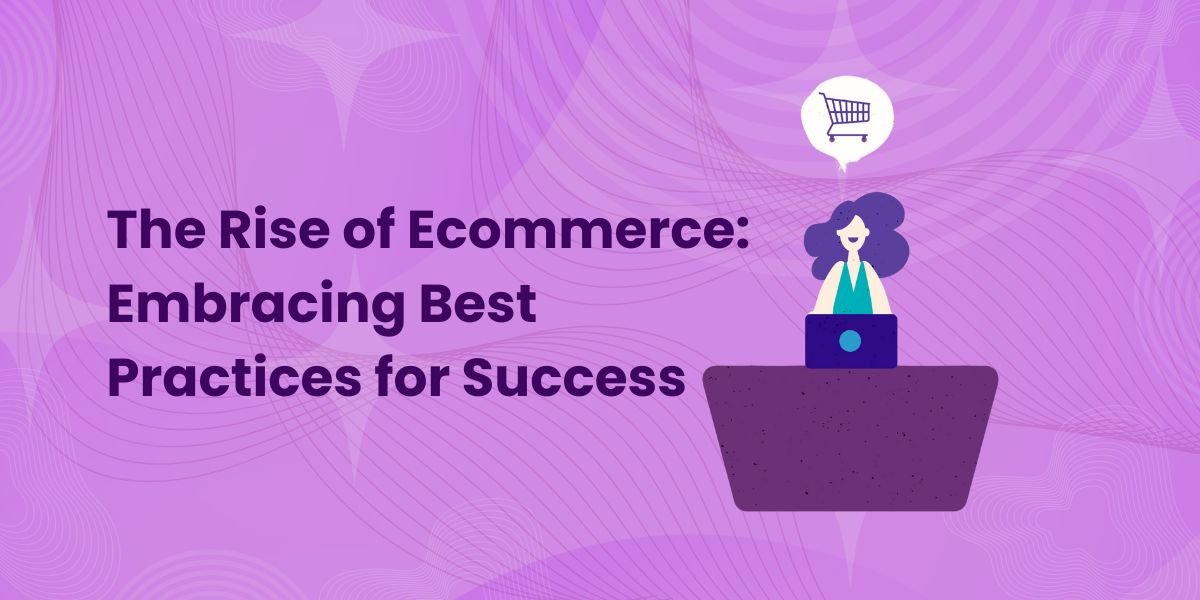In today’s digital age, establishing an online presence is more than a trend—it’s a vital component for businesses aiming to thrive. The ecommerce landscape offers unprecedented opportunities for retail businesses, regardless of size, to reach a global audience. This article explores real-life ecommerce success stories and outlines key “Ecommerce Sample Best Practices” that have contributed to their achievements. These examples demonstrate how businesses have leveraged technology, overcome challenges, and harnessed ecommerce to build thriving online stores.
The Transformation of Retail: Embracing Ecommerce Best Practices
The transition from physical stores to online platforms marks one of the most profound shifts in retail history. Ecommerce empowers businesses to operate around the clock, reach a global customer base, and cut down on the costs associated with traditional brick-and-mortar stores. However, succeeding in the online retail space requires understanding and implementing “Ecommerce Sample Best Practices.” By examining the journeys of successful ecommerce businesses, we can uncover valuable insights and strategies for navigating the online marketplace.
1. Glossier: Building a Community-Driven Beauty Brand
Glossier, a beauty brand started by Emily Weiss as a blog named “Into the Gloss,” exemplifies the power of community engagement. The brand’s success highlights a crucial “Ecommerce Sample Best Practice”—leveraging content to connect with and understand customers. By actively engaging with its audience and using their feedback to shape product offerings, Glossier built a strong, community-oriented brand. Its ecommerce platform is designed to be sleek and user-friendly, ensuring a seamless shopping experience that has been key to its global success.
2. Warby Parker: Innovating the Eyewear Industry
Warby Parker revolutionized the eyewear market by addressing a common consumer pain point—overpriced glasses. Their innovative “Ecommerce Sample Best Practice” includes a unique try-before-you-buy model, allowing customers to select five frames online for a home trial before purchasing. This direct-to-consumer approach not only cut out the middleman, resulting in cost savings, but also built a loyal customer base. Warby Parker’s integration of an intuitive ecommerce platform with its physical stores demonstrates the effective blending of online and offline shopping experiences.
3. Allbirds: Emphasizing Sustainability
Allbirds, known for its eco-friendly footwear, offers a compelling example of “Ecommerce Sample Best Practices” focused on sustainability. By using natural materials like merino wool and eucalyptus fiber, Allbirds caters to environmentally conscious consumers. The company’s ecommerce success is driven by its transparent approach to product sustainability and its visually engaging website, which effectively communicates the brand’s values and unique selling propositions.
4. Casper: Simplifying the Mattress Purchase Experience
Casper disrupted the mattress industry with its straightforward approach to online sales. The brand’s success highlights the importance of a simplified customer experience—an essential “Ecommerce Sample Best Practice.” By offering a single mattress model with a 100-night trial period and clear, transparent pricing, Casper streamline the purchasing process. Its user-friendly website and targeted marketing strategies further contributed to its success, demonstrating how an innovative ecommerce approach can reshape consumer expectations.
5. Gymshark: Mastering Digital Marketing
Gymshark’s rise from a garage startup to a global fitness apparel brand underscores the power of digital marketing and community engagement—key “Ecommerce Sample Best Practices.” The brand effectively utilisedF social media and influencer partnerships to connect with fitness enthusiasts. Gymshark’s mobile-friendly ecommerce platform and engaging content have been pivotal in building a loyal customer base and driving global success.
6. Bonobos: Pioneering the Online-Only Model
Bonobos, known for its well-fitting men’s pants, was among the first to adopt an online-only retail model. This approach exemplifies another important “Ecommerce Sample Best Practice”—creating a strong value proposition and enhancing customer experience. Bonobos offered free returns and introduced a unique “guideshop” concept where customers could try on clothes before ordering online. This blend of online convenience with physical try-ons helped the brand build trust and establish a strong online presence.
Embracing Ecommerce Best Practices for Future Success
These success stories illustrate diverse approaches to ecommerce, each emphasising different “Ecommerce Sample Best Practices” that led to their achievements. Whether it’s community engagement like Glossier, innovative models like Warby Parker, sustainability like Allbirds, simplified experiences like Casper, digital marketing like Gymshark, or pioneering online-only models like Bonobos, the principles of ecommerce best practices are evident.
For retail businesses looking to excel online, these examples offer valuable insights. Embracing ecommerce best practices involves understanding your target audience, committing to innovation, and adapting to evolving market conditions. By learning from these real-life e-commerce successes, businesses can chart their own path to online success, unlocking the vast potential of the digital marketplace.
By implementing these insights and adhering to ecommerce best practices, businesses can seize new growth opportunities, expand their reach, and achieve lasting success in the digital era. Now is the time to embrace ecommerce and build a thriving online business.

Leave A Comment